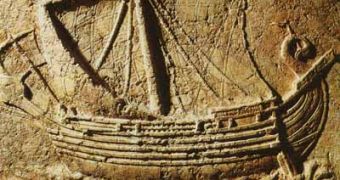People were still carving stone for tools when they started seafaring adventures. Tools of the most ancient seafarers known by now were found on the seabed off Cyprus: they are over 12,000 years old, long before the island became populated with its first permanent inhabitants, 10,000 B.C. The newly found items could explain more the early history of Cyprus and Mediterranean seafaring.
The pre-Neolithic (before "New Stone Age") finds, chipped stone tools and ground stone implements, were located in several areas off the western coast, near Aspros, a site found in 2004. The best items were discovered in water about 33 ft (11 m) deep, about 330 feet (110 m) offshore.
"These are the people who are the pioneers; without their knowledge people who came later maybe would not have had it that good," said lead researcher Albert J. Ammerman, of Colgate University.
"The new discoveries indicate that ancient Aspros was much larger than the landward section visible today. The Aspros site, discovered in 2004, now extends more than 820 feet (270 m) along the top of a cliff on the north side of the dry Aspros River bed," signaled the archaeologists.
"All of what we see on the land is just a tip of the iceberg of what is in the water," said Ammerman.
The underwater survey was carried out by nine American and Cypriot divers. Aspros is located on a coastal eolianite (ancient cemented sand dunes) formation.
The Ice Age sailors could have navigated from modern Syrian and Turkish coasts, at least 46 miles (74 km) north and east of Cyprus. Previously it was thought that seafaring in the region started about 9,500 B.C., based on 20 year-old findings made at Aetokremnos, on southern Cyprus. But now it appears that the early sailors moved more widely and more frequently than previously thought.
"This just shows there is a lot more activity than was originally thought," said Tom Davis, an archaeologist and director of the Cyprus American Archaeological Research Institute, not involved in this research.
"We're looking at repeated visits around the island. These would be people stopping deliberately, coming to the island to use resources, setting themselves with a clear understanding of the landscape," Davis said.
If the carbon dating confirms the new findings from a climatic cold snap called the Younger Dryas (from a tundra grass), about 11,600-12,800 years ago, in those times the sea level was 200-230 ft (66-77m) lower. The subsequent warming flooded the ancient coast.

 14 DAY TRIAL //
14 DAY TRIAL //